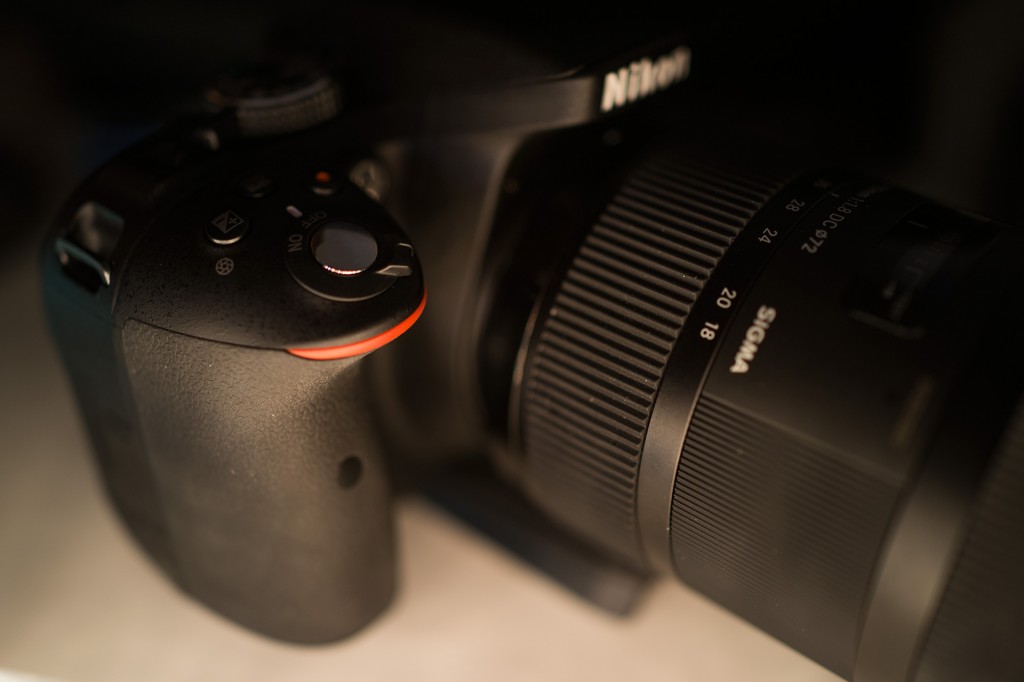http://vimeo.com/86653562
Original music by Berlin electronic act Herdwhite – see more on iTunes
Join EOSHD on Facebook – we broke 10,000 likes and counting yesterday – thank you everyone
I’ll start this review with a parable. It is a parable about an old man, who fell asleep…
In the prime of his life the man understood exactly how people used cameras. Because he was a photographer himself…
He worked extremely hard all day and at the 11th hour went to bed. When he woke up, he checked his bank account and realised he was rich. Very very rich. So he immediately fell asleep again.
However the next time he woke up things had changed. Everybody was taking selfies on their portable computer mouthpieces and this the old man did not understand or even like. Some photographers were even taking moving pictures with their stills cameras and the old man felt this very silly. He even wondered if he’d accidentally swallowed too much mouthwash the night before.
The old man checked his bank account again and after feeling complacent he yawned and dozed off again. He went back to sleep for a very very long time. It was quite late in the day when the old man was awoken by a knocking sound on his door. It was his accountant. “Mr Nikon, Mr Nikon! Nobody is buying your digital-variant 1970’s SLR cameras any more!”
***
This isn’t actually a real Japanese parable. It actually comes from Finland, the character’s name was Mr Nokia and it goes something like this – one day he got hit on the head by an Apple and swiftly died.
Granted that’s a short parable but it has a very important message for Mr Nikon and indeed Mr Canon.
And so… As the D5300 sees a bright new iterative dawn on a bright new evolutionary day at Nikon HQ, but not as many people are there to welcome it. The D5300 is a lovely sensor and image processor wrapped up in a very uninspiring DSLR shaped box just like all the others.
The D5300 comes into a world where video enthusiasts are shooting 4K on Panasonic consumer cameras and ProRes on revolutionary Blackmagic cameras for $999. Pros are shooting on a very profitable Cinema EOS cameras from a small company called Canon and almost everybody else just CANNOT BE BOTHERED with proper cameras anymore and have given up, choosing to shoot selfies with their smartphones!!
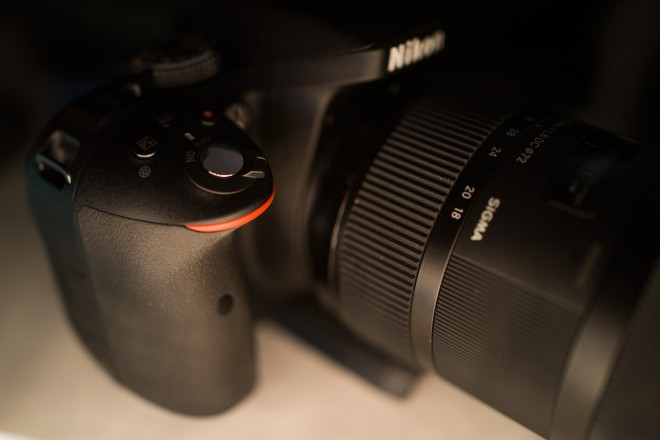
Dinosaurs
It’s great Canon are in the photocopier industry because they clearly they get a lot of use out of them themselves. The new $499 T5 is essentially a recycled Canon T2i (550D) from 5 years ago (2009).
Can you imagine that in 5 years from now, Nikon will announce to the world in 2019 a new DSLR essentially identical to the D5300? We’d all say that’s nuts, but it actually seems to have worked quite well for Canon’s sales.
Therefore my conclusion is that consumers don’t know what the hell they’re doing. Happy shopping people!
D5300 today’s GH2… but too late?
On the EOSHD forum there’s actually been quite a lot of enthusiasm for the D5300. None of it is misplaced, all of it genuine. I can understand where they’re coming from. I felt the same way about the GH2 a few years ago. But back then I’d have had to spend $6000 or more to get a marginally better image. I just wanted to shoot nice 1080p, conveniently, for a low price with interchangeable lenses. The D5300 to some is $799 for a Super 35mm camera that shoots quite nice 1080p with no moire & aliasing problems, good in low light, great articulated screen – and free Nikon stills camera into the bargain. What’s not to like?
I accept that this camera will have many satisfied customer, but I just cannot get over the…
Baby Photo Mode

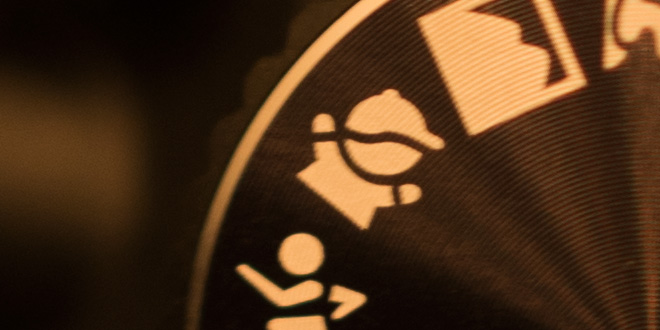
The D5300 has a ‘Baby Photo’ icon on the mode dial. Yes – a little picture of a kid throwing his hands up excitedly in the air. Curiously missing is movie mode.
I know this is a low-to-mid range mass-market DSLR, but really, what is more creatively appealing to an imaging company? Is it decades of artistry and moving images, legions of aspiring filmmakers the world over trying to make something of themselves, talent after talent unleashed through technology, from country to country, through a new distribution platform called Vimeo, with Hollywood as the ultimate pinnacle, the feature film their goal…
Or is it pictures of babies?
The dial isn’t short of clutter. There’s 13 modes on the dial but no movie mode.
This combined with the lack of selectable aspect ratios for stills causes a real headache with composition. Something quite important, you’d think Nikon would have paid attention to it before starting on their Baby Photo mode and selection of attractive Art Filters. It turns out they have indeed paid attention, but the implementation is terrible.
The LCD has almost invisibly faint transparent masking marks for 16:9 and these only appear when the LCD is lit up like Vegas with irrelevant junk. When the info is paired back to a minimum to allow you to focus on the actual image, the essential masking marks are removed entirely and instead you get tiny little notches at the side denoting where the 16:9 box sits. Only when you hit record does the LCD display crop to 16:9.
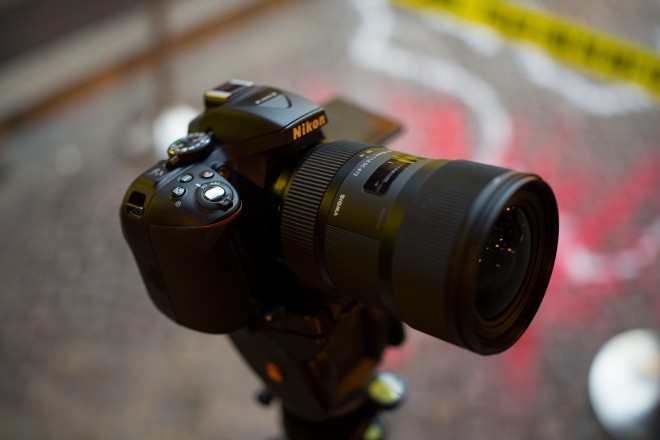
The tragic thing is, Nikon just cannot seem to grasp the opportunity at their fingertips. They have all the components required to build a video optimised DSLR for hobbyist videographers and aspiring filmmakers at an affordable price with hardly any additional overheads, far less than they have spent on marketing alone for their poorly received mirrorless 1 series.
Simply by repackaging the D5300 and redesigning the firmware, Nikon could make it 10x more useful for everyone in the world with an interest in shooting artistic video.
In addition Nikon have all the technology to build a high end cinema line for pros like Cinema EOS, something which is turning out to be massively profitable for Canon. The sensor, the image processor, the codec, the lenses, everything.
It’s like finding the components of a nuclear fusion reactor in your dad’s garage one day, and him telling you nonchalantly that ‘yeah, had that for a while now. What of it?’. That is Mr Nikon!
Weird upgrade path
“Ah but it’s only ever designed to be a consumer stills camera! If you want video buy a video camera at $15,000 or a dreadful small chip camcorder for $1000!”
This is an argument I see pedalled out on forums and comments sections everyday on the internet by clueless people who have never shot a frame of video. Likewise Nikon’s strategy towards video is just as ignorant. The higher up the Nikon range I go the worse it gets, which gives you a pretty solid understanding of how little regard is given to video by the conservative 120 year olds running Nikon. It’s home-movie stuff, anything but art. Guess which Nikon DSLR has the worse video quality in 1080p? The D4!
You could upgrade from the D5300 to the D7100 but for no gain in video quality. In fact you LOSE video features. Gone would be 1080/60p and the articulated screen. You could upgrade yet again to the full frame D610, lose the same features again and actually have a step backwards in image quality – horrible shot-breaking moire and aliasing plagues that camera for no good reason. You could upgrade yet again to the D800 and have the same ugly patterns all over your broken images and worse low light performance, still no 1080/60p or articulated screen or any extra major video features. The Blackmagic Pocket Cinema Camera is $999 with a 10bit 4:2:2 ProRes codec, crisp detail and 13 stops of dynamic range. The D5300 does have a better screen than the Pocket Camera, which is articulated and it does have an APS-C sensor, 1080/60p in addition to the film frame rate of 24p and 25p, so it’s not all bad… Until you realise it’s going to be obsolete in a few months when cinema standard 4K arrives at consumer prices with the GH4.
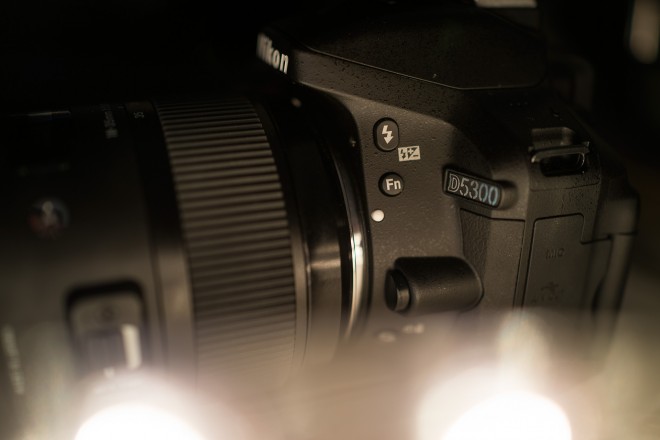
Now let’s focus on what they have got right…
The low end Nikon D3300 ($599) and mid-range D5300 ($799) both have the same 24MP sensor, similar image processor and a similar end result. The D3300’s video output has the same amount of detail as the D5300’s but it lacks the very capable high-res articulated screen of the D5300, which is critical for shooting video with on a tripod. The D5300 is worth the extra $200 in my opinion.
Neither can quite match the GH3 for detail in 1080p (let alone the GH4). I believe the trick Panasonic are using to give us such crisp 1080p on their cameras is to down-sample the sensor to roughly 2.5K and then oversample 1080p from that higher resolution raw image. The D5300 looks like the 5D Mark III’s stock video mode for resolution – it’s a bit mushy. You notice this the most when shooting in daylight at focus points between infinity and roughly 5 meters. Sometimes you don’t notice the softness much at all, so it’s not the camera’s main problem.
With sharpness dialled down in-camera it will look very soft and require digital sharpening to be added in post. You can do this in-camera by simply leaving it on the Standard or Vivid picture profile and not turning down sharpness. Whatever method you use the results after grading look similar.
Compared to the Canon Rebels, 6D and 70D the Nikon D5300 has far lower moire & aliasing (it’s almost unnoticeable) in videos and better low light performance than the Canon APS-C fleet. Stills are also way ahead now on the Nikon cameras compared to the Rebels. With a near-2 stop dynamic range advantage and a significant resolution bump over Canon, the Toshiba sensor in the D5300 rates over 20 points higher than Canon’s 700D on the DXOMark chart, and 15 higher than the 70D. JPEGs and raw stills out of the D5300 are very good indeed.
The D5300 as well as the D3300 (surprisingly) can be used for moderate slow-mo work as they both shoot 1080/60p which can be slowed to 1080/24p in post. I wouldn’t show a film in 60p I think it looks awful at the native rate. The camera is PAL / NTSC switchable so European users will get 50p and 25p to prevent street lights looking like a disco.
Low light performance is very good, even with the focus assist zoomed in 2 levels you will find it difficult to see any noise on the LCD while out shooting in low light at ISO 800. The image maintains rich colour at high ISOs and on brighter areas of the image at high ISOs noise almost vanishes altogether. ISO 1600 and 3200 are perfectly usable in video mode and even 6400 and 12,800 are better than on many cameras at the same price, closer in fact to the Super 35mm sensor in the Sony FS100. This is impressive when you consider the D5300 packs in 24MP and the FS100 just 2MP.
There is a new magnified focus assist that shows tons of detail but only at a very low frame rate of around 5fps. The punch-in focus assist is generally a bit slow to use and you can’t simply half-press the shutter button to come back out of it, instead you have to tediously reverse back out out with the ‘minus’ key.
The large 3.2″ screen is definitely a strong point – very good colour and resolution.
But I still have the feeling that in 2014, the D5300 is merely a high deck on the Titanic.
Ergonomics
I’m beginning to really feel a difference between DSLRs and mirrorless cameras. It feels retrograde to go back to using a DSLR, especially a low to mid-range one. All the buttons are cheap. The body looks dated. Live view AF is pitifully slow. The lens mount is way too restrictive. There are even some NIKON lenses I can’t use on it! I can’t use my pre-AI 55mm F1.2 for fear of damaging the mount and I can’t drive AF on my AF-D Nikon lenses as the D5300 lacks the required hardware. There are way to few nice VR lenses in the Nikon range, very few fast primes have VR and yet with the Olympus OM-D E-M1 any lens you put on it automatically has class-leading stabilisation better than any VR lens in the entire Nikon range including their pro lenses.
No OLPF
The lack of anti-aliasing filter (OLPF) over the sensor is a change from last year’s D5200 but not one that has an affect on any real end result – certainly zero effect on detail in video mode. It’s a marketing ploy designed to make stills look better at 1:1 in reviews.
Last year’s D5200 has an identical image in video mode and costs just $400 used, which makes it hard to justify the D5300 if you don’t need 1080/60p.
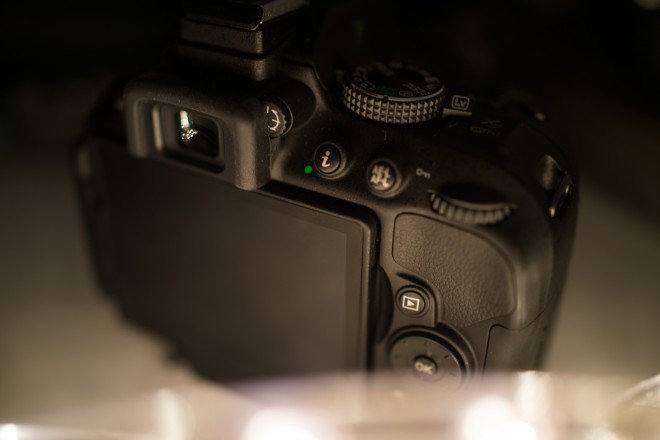
Conclusion
As of today, DSLR video is over. Dead. Kaput!
It may be resurrected who knows? But right now the future is with mirrorless, 4K, 10bit codecs such as ProRes, powerful raw and dedicated cinema cameras.
The whole raison d’être of DSLRs as affordable, accessible filmmaking tool is just not there anymore, because we have all of the above at consumer prices.
Even if DSLRs get 4K which has been the case with the Canon 1D C, the photographic giants just don’t seem to bother putting any other video features in to sweeten the deal. The 1D C was barely unchanged from the 1D X whereas the mirrorless GH4 is based around a camera that was optimised for video from day one.
The lack of video features and 4K will put DSLRs at a very significant disadvantage on performance relative to the best mirrorless cameras this year.
As for stills I’d much rather choose the Olympus OM-D E-M1. It packs far more technology into a much nicer body than the D5300 and it has a soul.
To give you an idea of how antiquated the D5300 form factor is you still can’t change the aperture from the camera whilst live-view mode is engaged. Why on Earth not?
There are a few solid features that are useful. That higher-than-AVCHD bitrate of 38Mbit in 1080/60p prevents the image from breaking up quite so much on sweeping pans and scenes with complicated movement. The camera uses a variable bitrate which scales up and down depending on the demands of the image, never quite dropping the ball in terms of image quality. It’s an impressive codec for $799, better than the one Sony uses on the flagship A7R.
But in the cold light of day for $1999 (maybe less by the time final pricing is announced), Panasonic offer us 4K video. At $799 Nikon offer us a Baby Photo Mode. Why bother with this crap any more? Really? At $2000 Nikon give us moire, aliasing and no 1080/60p and at $6000 Nikon offer us their worst video quality with the D4 – is that their upgrade path? What a mess!
If you do get the D5300, be prepared to sell it in 3 months time for something better.
Pros
- OK video quality and very good low light performance
- Better than Canon Rebels and 70D on image quality, for both video and stills
- Pleasing colour straight out of the MOV files, richness of tone maintained in low light
- 1080/60p useful for slow-motion video when converted to more cinematic 24p frame rate
- 38Mbit codec avoids break-up in 1080/60p mode (only 24Mbit VBR in 24p and 25p mode though)
- No significant moire or aliasing issues (though resolution falls short of being truly full HD)
- PAL / NTSC switchable for wide variety of frame rates
- Manual focus magnification has an ultra-detailed display mode (though painfully slow frame rate)
- Quicktime MOV file format benefits (easy editing and access, thumbnail preview in Explorer and Finder)
- Very nice smartphone standard 3.2″ articulated screen
- The sensor produces immaculate stills quality for the price
- $799
Cons
- Charmless – looks cheap, bland shooting experience
- Very poor ergonomics by Nikon standards
- Extremely dated form factor
- Very little signs of innovation
- Hardly any significant new features over the D5200
- No real improvement in image quality over the D5200 in terms of video or raw stills
- Cannot change aperture in live-view mode
- Very small viewfinder
- No dedicated aperture, ISO or white balance buttons or dials
- No headphone jack
- Hissy mic input
- Very basic video features compared to Panasonic and Blackmagic
- Nikon VR not video optimised, tied to limited range of lenses
- Olympus OM-D has far better stabilisation for casual point & shoot video
- Blackmagic Pocket Cinema Camera offers much better image for filmmakers (13 stop dynamic range, 10bit ProRes 422) for just $200 more
- Dated DSLR ergonomics no longer cut it vs mirrorless cameras from Fuji, Sony, Panasonic and Olympus –
- Awful plastic feel to buttons and dials
- Extremely pedestrian, almost useless AF performance in live-view mode
- Small optical viewfinder, cannot be used for video, no EVF
- The least adaptable lens mount out there
- Only one programmable function button and on far left-front of the camera
- Larger than a mirrorless camera yet to no avail – feels toy-like with small grip
- Will not start-up in live view mode, always requires lever press for video
- No dedicated movie-mode on the dial
- No way to mask off 16:9 area completely on LCD without tape



